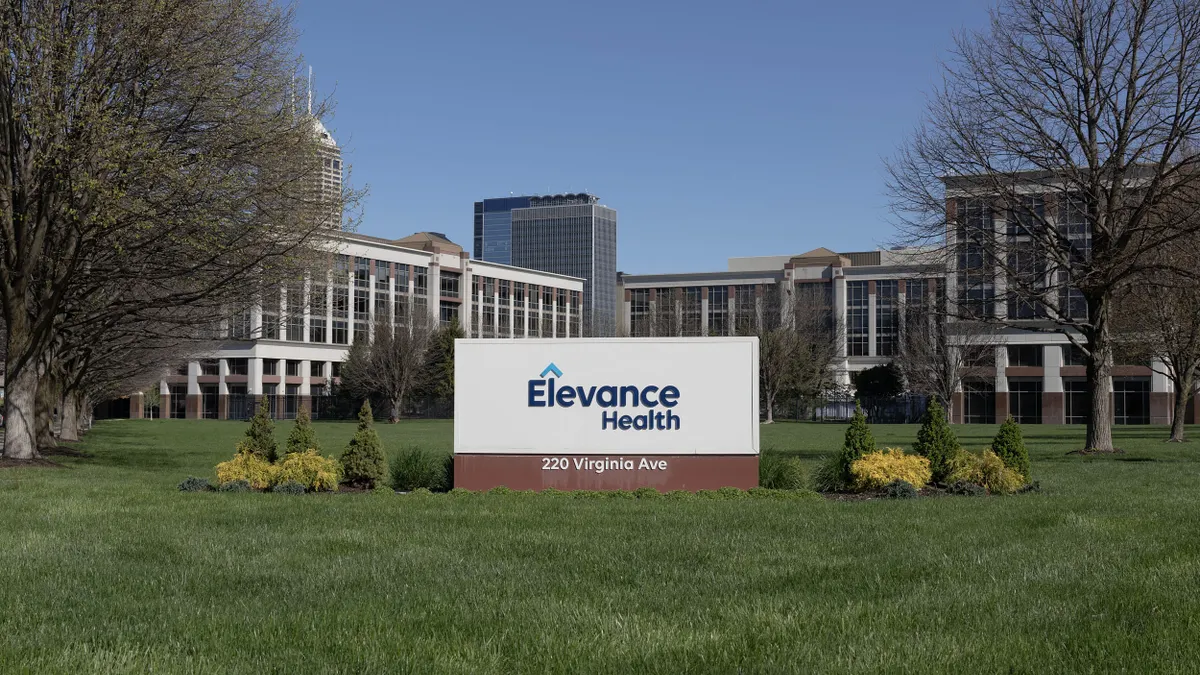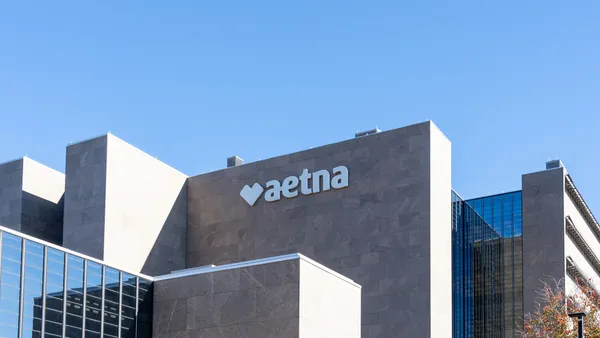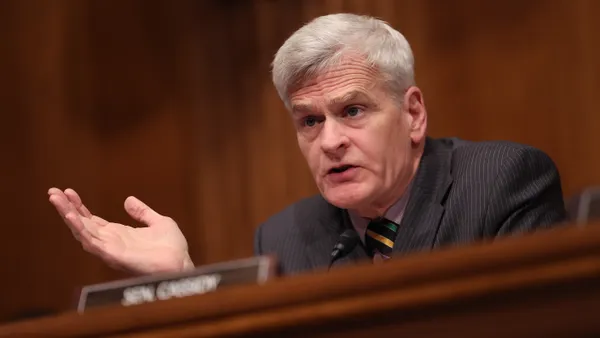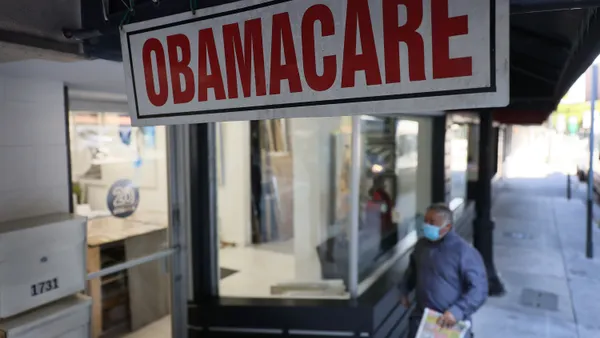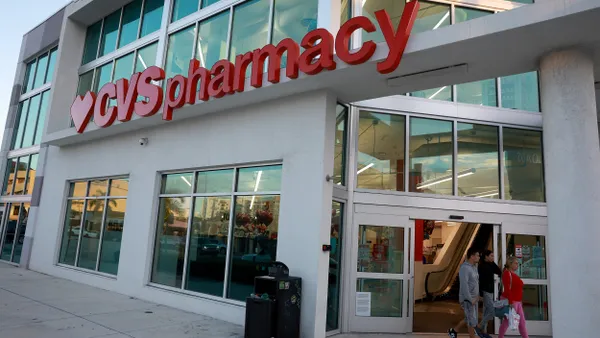Dive Brief:
- Elevance posted revenue and profit growth in the third quarter as the Indianapolis-based insurer brought in higher premiums and kept medical costs for its members in check.
- Elevance raked in net income of $1.2 billion on revenue of $50.1 billion in the quarter, up 17% and 12% year over year, respectively. Elevance’s stock ticked up in premarket trade after the results were released Tuesday morning — but it dropped again after executives implied that profit growth could shrink in 2026 during a call with investors later in the morning.
- Elevance said it expects a decline in Medicaid margins as state payment rates continue to not cover members’ medical costs — a bad sign for other managed care companies with a large presence in the safety-net insurance program, like Centene and Molina. Elevance also plans to invest “several” hundred million dollars in its health services division Carelon, artificial intelligence capabilities and Medicare Advantage star ratings, which could stifle earnings growth next year.
Dive Insight:
Investors take a long-term view of a company’s finances, factoring in both current performance and future outlook when assessing its value and potential. That assessment can be complicated by the companies themselves, which generally don’t release guidance for the next year until late in the year prior. As a result, investors look out for early thoughts from executives that often trickle in before official financial guidance is released.
Elevance handed those market watchers a gift on Tuesday when company executives outlined some considerations for 2026 — especially given the significant volatility currently plaguing the health insurance sector.
At issue are states’ Medicaid payment rates. Insurers complain that state payments have lagged behind the actual cost of providing care after post-pandemic policy shifts left them saddled with a Medicaid population that skewed sicker than before.
States have revised their rates upwards numerous times in the past few years — but not enough to cover the trend, according to insurers.
Elevance expects its Medicaid margins to decline at least 125 basis points, or 1.25 percentage points, in 2026 compared to this year.
“Trend continues to be pressured by elevated acuity and utilization driven by some of those state reverification processes and program changes,” Mark Kaye, Elevance’s CFO, said on the call Tuesday morning. “We do expect state rate updates to be modestly above historical levels but still trail trend into 2026.”
Other moving parts heading into 2026 include a potential expiration of more generous subsidies for ACA plans, the driving policy issue behind the ongoing government shutdown. The subsidies are credited for placing health insurance coverage within financial reach for millions of Americans. Without them, about 4 million to 5 million people are expected to lose coverage, according to various estimates.
Insurers expect those who remain on the exchanges to be sicker and therefore more costly. In expectation, payers hiked their premiums for 2026 plans.
If the subsidies expire, “we’d expect a material contraction in the ACA marketplace,” Kaye said. “That smaller, more acute pool does mean fewer enrollees to spread risk and sharper premium increases, and that’s really what we’re seeing. Certainly a full or partial extension of those premium subsidies ... that would definitely support consumers in a more stable, affordable marketplace over time.”
Though Elevance’s plan filings reflect that higher acuity in the form of higher premiums, if the subsidies are eventually extended, the insurer will work with state regulators to help people stay insured, CEO Gail Boudreaux said.
“We’re ready and prepared for a range of policy outcomes,” she noted.
Another government program, Medicare Advantage, has also been an issue for insurers as the government cracks down on overpayments and members utilize more medical care. In response, Elevance elected to trim its MA footprint and exit Medicare’s prescription drug plan market entirely for 2026.
The insurer is also pushing HMO plans, which give it more direct control over costs, and dual Medicare-Medicaid plans, which tend to come with a higher margin, in a bid to improve the business’ margins next year.
“We feel good about how we are positioned around improving our profitability,” said Felicia Norwood, Elevance’s head of government health benefits.
Elevance plans to provide specific earnings guidance for 2026 in January, after it gets more visibility into updated Medicaid rates, the results of Medicare open enrollment and what happened with ACA subsidies.
But all told, earnings pressure in Medicaid and the ACA — combined with increased investments to shore up Elevance’s operations — point to lower profit growth next year before a potential recovery in 2027.
“While [management] didn't directly address 2026 [earnings per share] growth/decline, pointing to 2026 investments allowing for ‘balanced earnings growth in 2027’ seems like a backdoor admission 2026 [earnings per share] is likely expected to decline, for now,” Jefferies analyst David Windley wrote in a note on Elevance’s results.
It’s worth noting that insurers will face a slew of new policy challenges in 2027 as well. The GOP’s massive tax and policy law passed this summer enacted work requirements in Medicaid and more rigorous eligibility checks for enrollees, policies that are expected to lead millions of Americans to lose coverage. Both kick in at the start of that year, though insurers argue the implementation schedule gives them time to adequately prepare.
Elevance’s outlook moving forward may be causing concern for investors. But the insurer, which covers 45.4 million medical members across its various books of business, performed better than expected in the third quarter, including by controlling medical costs.
Elevance posted a medical loss ratio, a marker of spending on patient care, of 91.3% — up compared to 89.5% same time last year, but still better than analyst forecasts.
But despite revenue growth, the Indianapolis-based insurer’s health benefits segment posted operating income of $601 million, less than half of the $1.6 billion it brought in last year and below analyst expectations. Elevance cited higher operational investments, including in technology, as the reason for the decline.
Elevance’s health services business Carelon posted operating income of around $800 million, in line with 2025 but also shy of analyst expectations — especially considering Carelon increased revenue by 33%. Elevance also chalked the lower margin up to investments in the platform.



